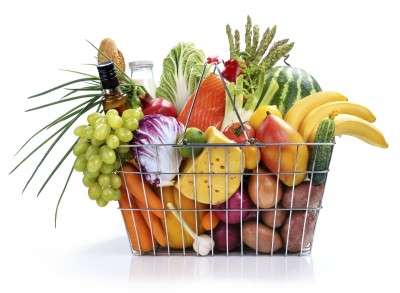New study shows divide between rural and metro food prices

Victoria is probably Australia's most populated state, with the least number of areas that could be regarded as remote. Yet a new study reveals that Victorians living in non-urban environments pay more for healthy food than their urban counterparts.
Nutritious diets are more expensive and the costs of a healthy diet can increase further for those Victorians who live in rural areas, according to a new study that has broken down the cost of a basket of healthy food available to four different types of Victorian families. Interestingly the study found that eating healthily was more a factor of proximity to towns and cities than socioeconomic status.
The groundbreaking study, led by Dr Claire Palermo, from the Monash Department of Nutrition and Dietetics, has studied how much a basket of nutritious food (fruit, vegetables, meat and meat products, breads and cereals, costs across 26 metro and 76 rural areas, a total of 115 stores in winter and summer of 2012, 2013 and 2014.
The study – published in The Australian and New Zealand Journal of Public Health, looked at the cost of food for four different families for a fortnight (a family of four; single parents; female over 65 years and male 18-50 years). The research team took a random sample of stores in rural and metro areas, collecting data on the price of each item.
The study found that the cost of a healthy food basket for a family of four increased by $27 to a total of $451 from July 2012 to December 2014. According to Dr Palermo, this cost is 32% of for those on the lowest income.
"A healthy diet costs around 30% of government benefits income. Anything over 30% is classified as unaffordable," she said. The average Australian spends 20% of their income on food.
For the same period of time the food basket increased in price by $21 to $310 for a single parent family; $7 to $109 for a female over 65 years and $6 to $141 for a male 18-50. All three groups kept the cost of their basket under 30% of the average income for that group.
The data also revealed that the distance of stores from the state capital city predicts differences in food costs, making healthy food options unaffordable for some Victorians.
Significantly, the research team also showed that the further the store is from the city centre, the higher the total cost of the healthy food basket, despite much of Victoria not being considered very remote.
Dr Palermo added that there was no association found between basket cost and the socio-economic index of the town in which the store was located.
"These findings provide new and unique insights into the cost of food as a key determinant of health in a populated state such as Victoria."
The mean cost of the healthy basket for a typical family represents approximately 31% of household income, and given the rising costs of living pressures and related food stress, eating a healthy diet may be less attainable for those on lower incomes, Dr Palermo added.
The study also found that:
- The cost of fruit and vegetables varied over time more than meats, breads/cereals, dairy foods and non core foods such as margarine.
- The further a store is from the city centre the higher the total cost of a healthy basket of food.
- No association was found between basket cost and the socio-economic index of the town in which store tested was located.

















